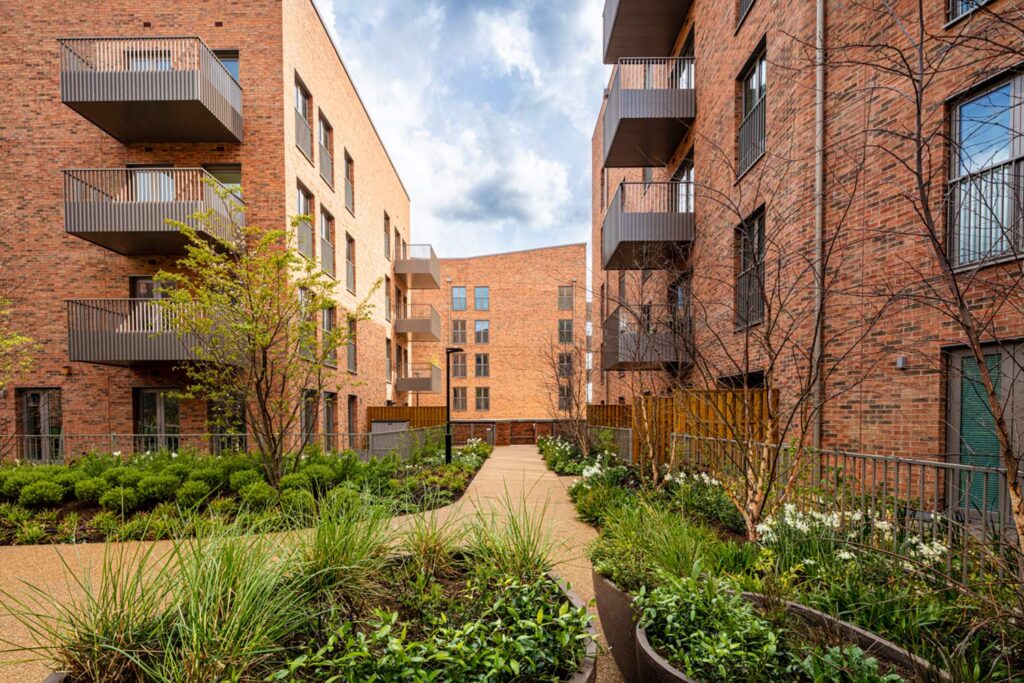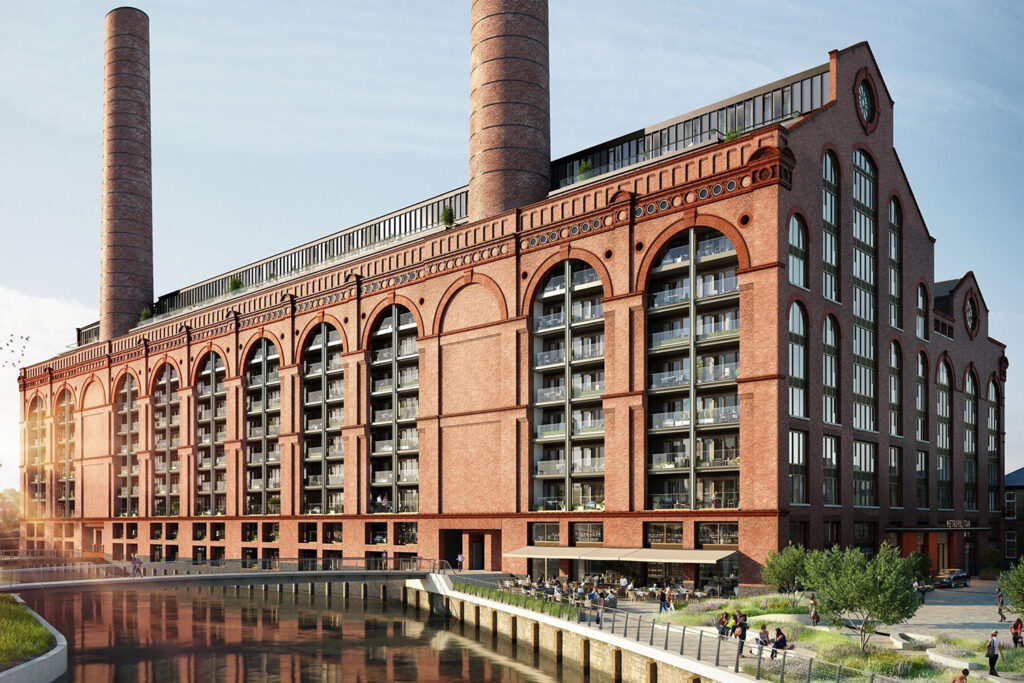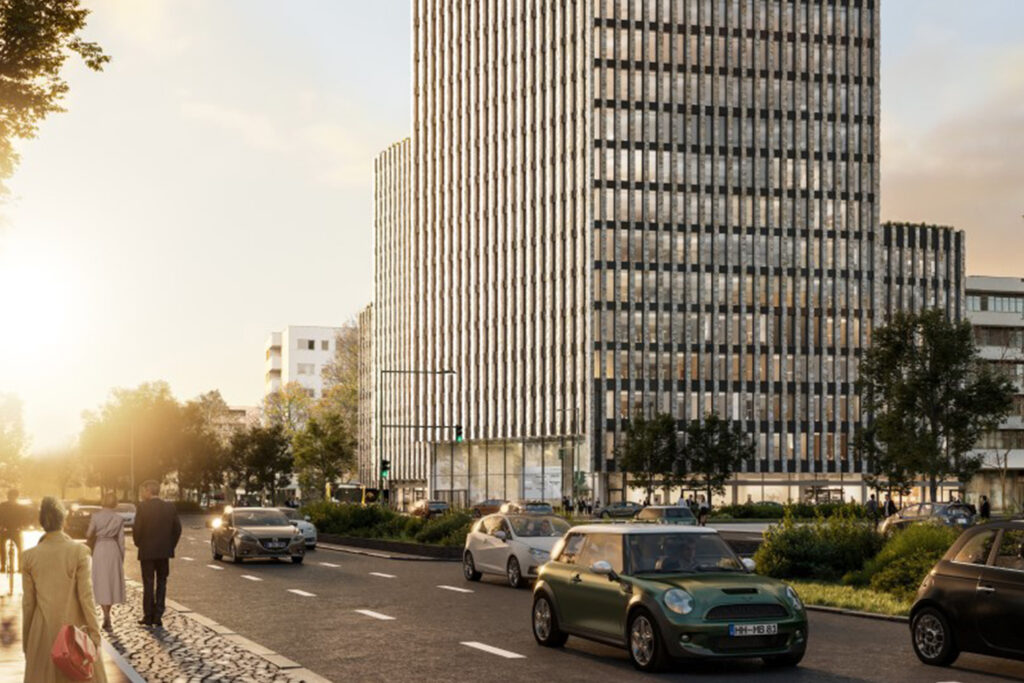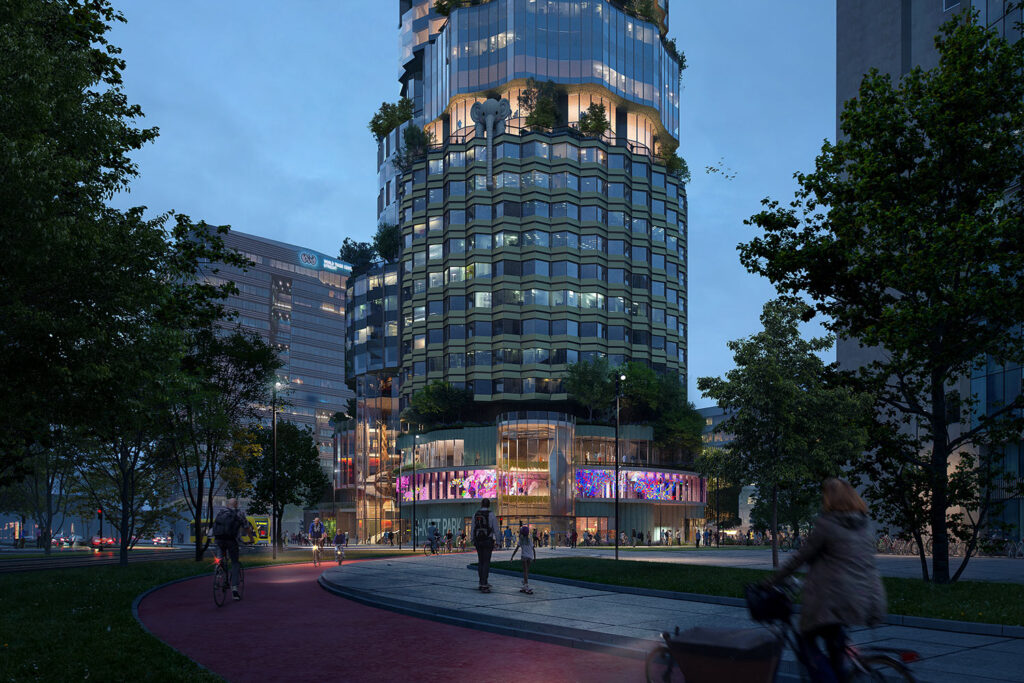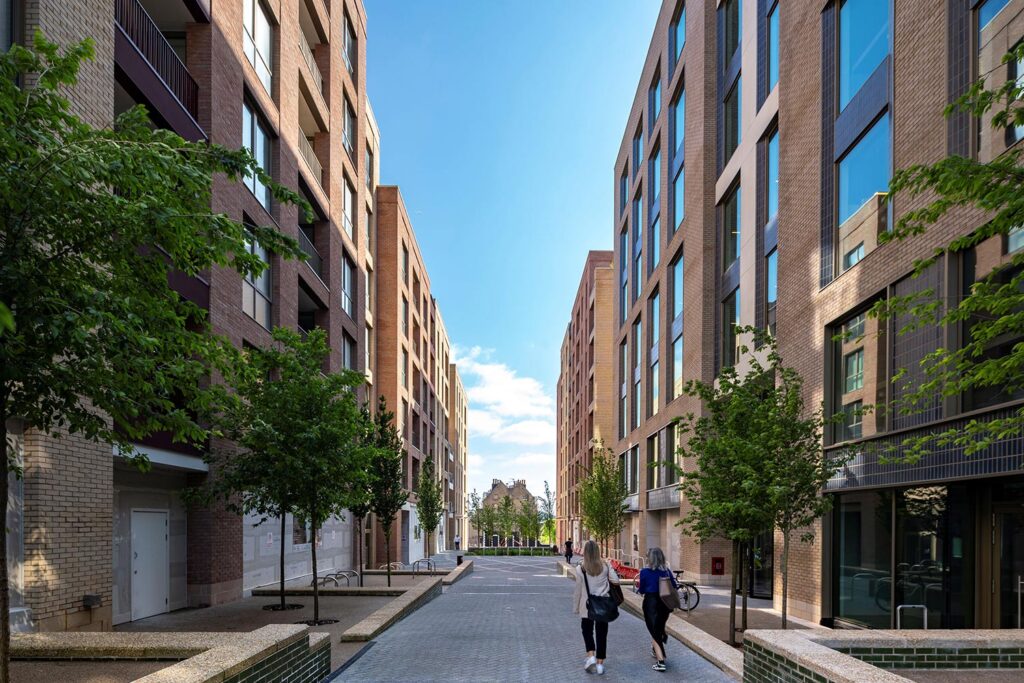
Delivering offsite efficiencies
for a landmark scheme
The Boatyard
Bristol, UK
Project details
Client
Mid-Group/Latimer by Clarion Housing Group
Architect
Lewis & Hickey
Collaborator
Creagh
Duration
2020 – 2022
Services provided by Buro Happold
Facade engineering, Ground engineering, Infrastructure, Structural engineering, Transport and mobility, Water
The Boatyard is a 152-unit, 100% affordable, residential development squeezed on to a slither of brownfield land between the busy Bath Road and the River Avon some 13 metres below at low tide.
Creating one of the biggest shared ownership schemes in Bristol, the project for Clarion Housing will deliver a mixture of one, two and three-bedroom apartments along with three commercial units. It includes a 17-storey tower and two accompanying buildings.
Challenge
Formerly occupied by an Esso filling station, the site is on the north side of Bath Road on the east side of Totterdown Bridge. Historically it was the site of a boatyard, and the remains of a slipway still exist. Sitting on 1.2 acres of land, the site is narrow and triangular. The naturally steep topography of the site and its close proximity to the river creates significant challenges.
Buro Happold had worked on plans for a previous market sale scheme on the site with a previous site owner in 2017, and we were engaged from the start of this project to help progress it through planning. We provided expert consultancy on structural engineering, ground and infrastructure engineering, flood risk analysis and mitigation, facades engineering, wind engineering and traffic and transport planning.
The construction process and eventual building loads made it necessary for extensive pre-build investigations of this constrained and complex site. There was lots of historic use, including a previous terrace of housing and an old tollhouse, as well as the boatyard, so the archaeology would need to be carefully examined before construction could begin.
There were also key retaining structures below the ground, supporting the busy A4 Bath Road. This would require complex infrastructure work, installing new retaining structures, removing the old ones, and inserting piled foundations to take the load of the superstructure above.
The constrained and challenging site, alongside the busy arterial road, would dictate a requirement to achieve as swift a construction as possible. Offsite construction using precast concrete allows for rapid construction, minimising deliveries and disruption around the site, while ensuring factory-grade levels of quality.

Solution
The residential floors are erected using a method of construction called precast cross-wall. Hollowcore precast concrete planks support the floor span on to loadbearing internal and perimeter loadbearing walls. The external wall is installed as finished units ready for a skim of plaster and paint. Using this construction method, a storey can be erected in less than two weeks.
In the UK, cross-wall construction is now used for the construction of hotels and student residential. It’s a rare but growing method used for the construction of residential developments and we’re involved in several other projects where cross-wall is the chosen method. There are complex building regulations dictating the necessity to structurally tie-together elements within precast cross-wall buildings, in order to mitigate against disproportionate collapse in the event of a fire.
As structural engineers we worked closely with the architects on the design of the whole building, with Creagh designing the industrialised precast elements that sit on top of our substructure and podium.
As well as the precast walls, the floors are precast as hollowcore concrete planks. The holes running through these flooring elements both reduces their weight but also reduces the overall embodied carbon of the building, even taking into account the additional concrete of the precast walls.
The speed of construction delivered by this prefabricated approach to the walls and floors is further enhanced by the efficient offsite construction of facade and window elements erected as part of the precast perimeter walls.

Value
As the only consultant to advise across both the former planning for the site as well as the current project we provided an important line of continuity. Delivering a range of multidisciplinary expertise across multiple elements of the project has allowed for an efficient and joined-up approach across the different engineering challenges on the site.
The industrialised approach to the prefabricated elements of the scheme delivers reliable factory-grade quality, with comparative – even marginally improved – levels of carbon sustainability compared to conventional construction approaches. It delivers this while critically allowing for rapid construction on site.
This kind of super-efficient building approach will become increasingly important in the coming years as society attempts to respond to the great need for the quick delivery of more high-quality affordable housing.
We are further developing our expertise around the future of offsite construction and rapid prototyping, looking at how we can use greater computational design approaches to this “kit of parts” method of construction to deliver even greater efficiencies to the development process.









